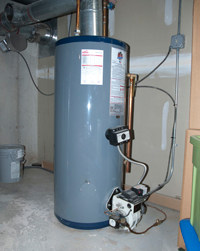Are you on the lookout for details involving Water Heater Maintenance Tips You Can't Afford to Forget?

Warm water is necessary for day-to-day convenience, whether it's for a refreshing shower or cleaning recipes. To ensure your hot water system runs efficiently and lasts much longer, normal maintenance is key. This post gives practical suggestions and understandings on just how to keep your home's hot water system to prevent disturbances and costly repair work.
Intro
Preserving your home's warm water system might appear challenging, however with a couple of easy steps, you can ensure it runs efficiently for several years ahead. This guide covers everything from comprehending your warm water system to DIY upkeep suggestions and knowing when to call in specialist help.
Significance of Preserving Your Hot Water System
Routine upkeep not only extends the life expectancy of your hot water system however also guarantees it runs successfully. Disregarding upkeep can result in lowered performance, greater energy expenses, and even premature failure of the system.
Signs Your Warm Water System Demands Maintenance
Understanding when your warm water system requires attention can avoid major concerns. Keep an eye out for indications such as inconsistent water temperature, weird sounds from the heating system, or rustic water.
Flushing the Water Heater
Purging your hot water heater eliminates sediment build-up, enhancing efficiency and prolonging its life.
Monitoring and Changing Anode Rods
Anode rods prevent deterioration inside the storage tank. Checking and changing them when worn is crucial.
Facility Problems Requiring Expert Help
Examples include major leakages, electric troubles, or if your hot water heater is regularly underperforming.
Routine Expert Upkeep Advantages
Expert upkeep can include comprehensive assessments, tune-ups, and making sure conformity with safety and security criteria.
Examining and Changing Temperature Settings
Readjusting the temperature setups guarantees optimal efficiency and safety.
Do It Yourself Tips for Maintenance
You can do several upkeep tasks on your own to keep your warm water system in top problem.
Checking for Leakages
Frequently inspect pipes and links for leaks, as these can bring about water damages and higher expenses.
Understanding Your Hot Water System
Prior to diving right into maintenance jobs, it's useful to recognize the fundamental components of your hot water system. Generally, this consists of the water heater itself, pipelines, anode rods, and temperature controls.
Monthly Maintenance Tasks
Normal monthly checks can assist capture minor issues prior to they rise.
Testing Pressure Alleviation Valves
Examining the pressure safety valve guarantees it functions properly and protects against extreme stress build-up.
Protecting Pipelines
Shielding hot water pipes decreases warm loss and can conserve power.
When to Call a Professional
While DIY maintenance is helpful, some issues require expert expertise.
Conclusion
Regular maintenance of your home's hot water system is crucial for performance, longevity, and cost savings. By following these pointers and knowing when to seek professional aid, you can guarantee a trustworthy supply of warm water without unexpected disruptions.
How to Maintain an Instant Hot Water Heater
Before tinkering with your hot water heater, make sure that it’s not powered on. You also have to turn off the main circuit breaker and shut off the main gas line to prevent accidents. Also turn off the water valves connected to your unit to prevent water from flowing into and out of the appliance. 2. When you’re done, you have to detach the purge valves’ caps. These look like the letter “T” and are situated on either side of the water valves. Doing so will release any pressure that has accumulated inside the valves while at the same time avoid hot water from shooting out and burning your skin. 3. When the purge valves’ caps are removed, you have to connect your hosing lines to the valves. Your unit should have come with three hoses but if it didn’t, you can purchase these things from any hardware or home repair shops. You can also get them from retail stores that sell water heating systems. Read the user’s manual and follow it to complete this task properly. When the hosing lines are connected, open the purge port’s valves. 4. You should never use harsh chemical cleaners or solutions when cleaning your unit. Make use of white vinegar instead. It should be undiluted and you’ll probably use about 2 gallons. 5. Now flush your water heater. This task should probably take about 40 minutes. We can’t give you specific directions for this because the procedure is carried out depending on the type, model and brand of your heater. With that being said, refer to the user’s manual. 6. When you’re done draining the unit, you have to turn off the purge port valves again. Remove the hosing lines that you earlier installed on each of the water valves. Put the valve caps (purge port) back in their respective places and be very careful so as not to damage the rubber discs that are found inside these caps. 7. Now that everything’s back in place, check your user’s manual again to find out how to reactivate your water heating system. 8. Once it is working, turn one of your hot water faucets on just to let air pass through the heater’s water supply pipes. Leave the tap on until water flows smoothly out of it. https://www.orrplumbing.com/blog/2014/september/how-to-maintain-an-instant-hot-water-heater/

Hopefully you enjoyed our piece about Tips on Maintaining a Water Heater. Thanks a ton for spending some time to browse our article post. Don't hesitate to take the time to distribute this blog if you enjoyed reading it. We treasure your readership.
Call Today